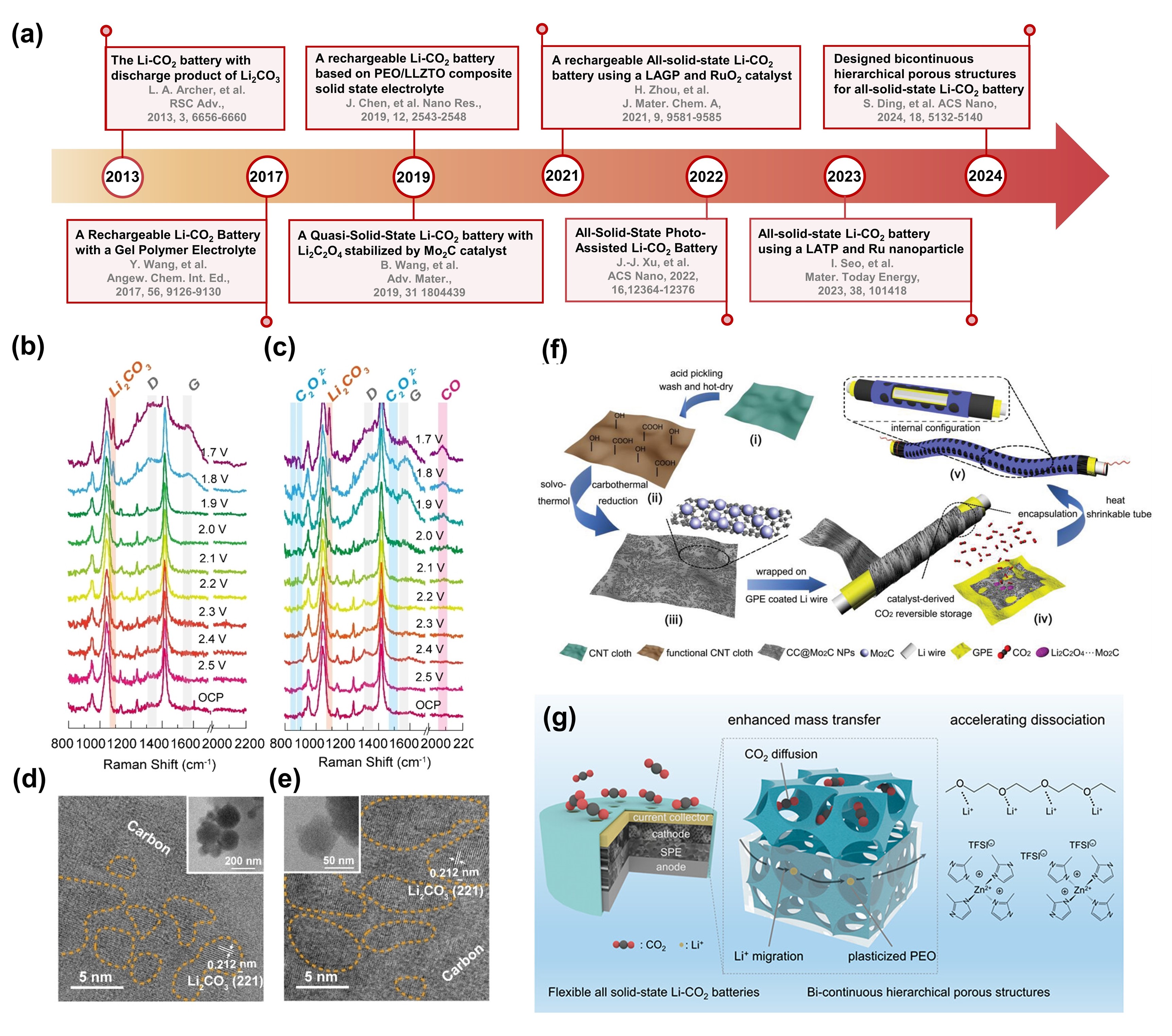Y.Y. Xu, Z.C. Xu, S.-Y. Lee * and Z.-S. Wu *
Science Bulletin, 2024, Accepted.

Lithium-carbon dioxide (Li-CO2) batteries are considered as one of the competitive candidates for safe sustainable energy storage technologies owing to their environmental friendliness and high theoretical energy density. However, the practical application of Li-CO2 batteries is limited by the sluggish kinetics of CO2 reduction and the potential insecurity of organic liquid electrolytes. To address these issues, solid-state electrolytes (SSEs) are the preferred choice for high-safe Li-CO2 batteries. In this review, a background overview of the state-of-the-art advancements in solid-state Li-CO2 batteries is introduced and elaborately discussed, including charge-discharge reaction mechanisms, instability factors, fundamental properties of SSEs, and effective construction of three-phase reaction interfaces in solid-state Li-CO2 batteries. Furthermore, we centered on the rational design and recent achievements in the interface modification, the high-efficiency catalyst design, and the integrated cathode structure of solid-state Li-CO2 batteries. The efficient multi-phase reaction interface (solid-solid-gas) to enable CO2 reduction and evolution processes in the cathode part is critical to solid-state Li-CO2 batteries, and it is essential to construct continuous e- and Li+ transport channels within the integrated cathode structure to create more active regions for rapid CO2 reduction reactions. Later, an in-depth understanding of the fundamental mechanisms, especially in the tracking of the three-dimensional microstructure evolution of the cathode-SSE-discharge products at various stages of CO2 reduction and evolution processes through visual in-situ characterization techniques is crucial for developing high-performance solid-state Li-CO2 batteries. Finally, the key prospects and future challenges are proposed, providing important guidance for the construction of high-safe solid-state Li-CO2 batteries towards practical applications.
